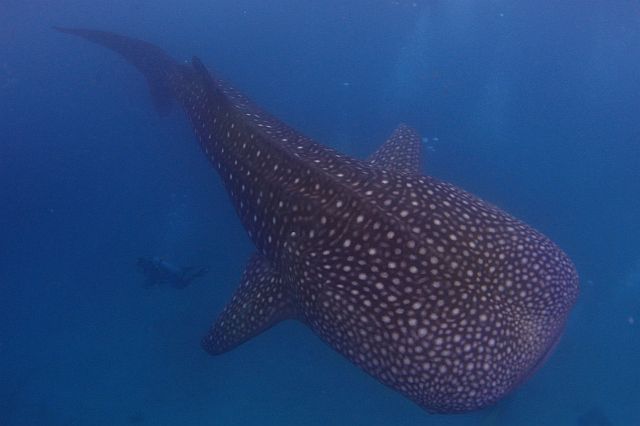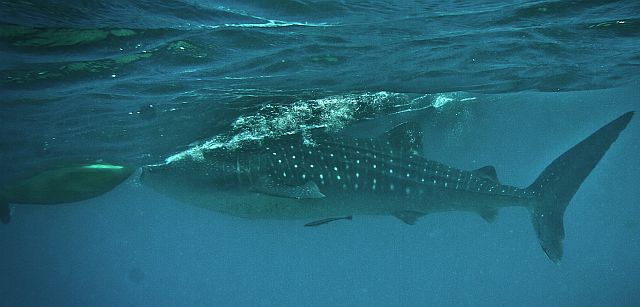
The International Union for the Conservation of Nature (IUCN) declared the Rhincodon typus (whale sharks) as endangered just last weekend. They are a star attraction in Oslob town. (CDN FILE PHOTO).
CEBU CITY, Philippines – The entire world on Tuesday, August 30, 2022, celebrates International Whale Shark Day as part of a collective effort in promoting the welfare and conservation of the gentle giants.
Here in Cebu, residents and visitors are no stranger to whale sharks, locally known as butanding.
The species have attracted tourists to Oslob, a 4th-class municipality on the southeastern tip of the island, where whale shark watching activities have flourished and at the same time, draw concerns from scientists and conservationists.
Recently, whale sharks were also spotted in other parts of Cebu, particularly in the waters of Mactan Island.
As we join the world in celebrating International Whale Shark Day, CDN Digital has compiled several interesting facts related to the iconic butanding.
1. Whale sharks can live up to more than 100 years.
A free-swimming whale shark, or a whale shark not in captivity or in the wild, has a life span between 80 to 130 years.

A fisherman feeds a whale shark with krill in Oslob town, southern Cebu in this August 2018 photo.
2. The term whale shark is a misnomer.
Whale sharks are scientifically classified as fishes, and are related to sharks. Whales, on the other hand, are mammals. A whale shark’s size, however, often matches those of whales, especially since it is considered the largest extant species of any fish.
Whale shark watching in the town of Oslob in south Cebu has been drawing hordes of international tourists who want to have a closer glimpse of the gentle giants of the sea. |CDN file photo
3. Rewards for leads on anyone harming or killing butandings in PH
Incentives or rewards are given to anyone who can provide information that can lead to the arrest of an individual or a group of individuals harming or killing a whale shark in the Philippines. Former President Gloria Macapagal-Arroyo issued Administrative Order No. 282 in 2010 to reinforce the country’s existing laws aimed at protecting butandings.
A local boatman in Barangay Tan-awan, Oslob town southern Cebu feeds a whale shark (butanding in Cebuano) during the ceremonial reopening of Cebu’s tourism industry on Friday, July 31, 2020. CDN Digital photo | Morexette Marie B. Erram
4. Whale sharks can filter thousands of liters of water in an hour.
As filter feeders, whale sharks can process more than 6,000 liters of water per hour through their gills, according to the World Wildlife Fund (WWF). Filter feeders can neither chew nor bite.
UNDERWATER MARVELS The waters off Panglao Island in Bohol host a healthy marine life that allows species like whale sharks and sardines to thrive. (PHOTO COURTESY OF IAN UY AND KEITH SEPE OF DIVE TA BAI)
5. They can give birth to 300 pups
Unlike other larger sharks, whale sharks can give birth to hundreds of small babies or pups, up to 300. Unfortunately, only a fraction of whale shark pups can survive to adulthood.
Sources
2. How big are whale sharks? And four other whale shark facts | Stories | WWF (worldwildlife.org)
3. Administrative Order No. 282, s. 2010 | Official Gazette of the Republic of the Philippines
4. Legal protection of whale sharks | WHALE SHARKS (ntu.edu.sg)
/bmjo


